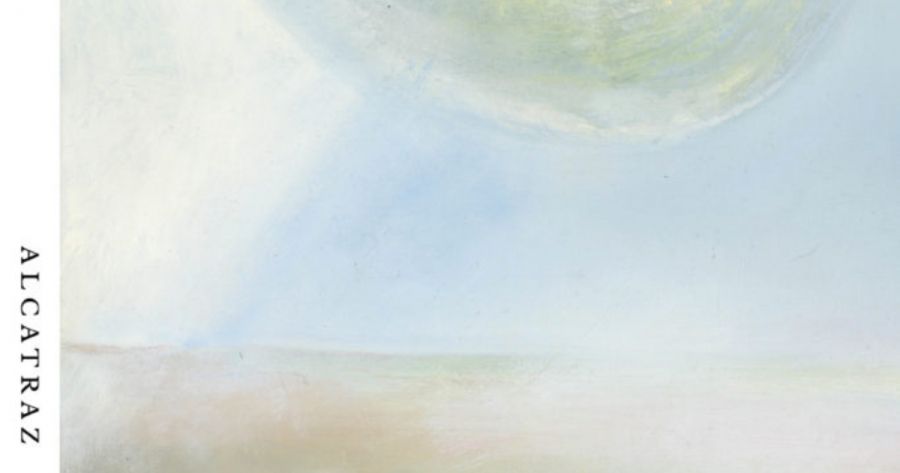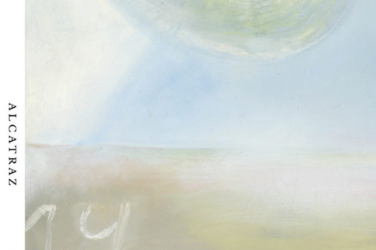
- Free Article: No
- Contents Category: Poetry
- Review Article: Yes
- Article Title: Unseen borders
- Article Subtitle: A breath of fresh anthological air
- Online Only: No
- Custom Highlight Text:
Alcatraz is an international anthology of prose poems which builds on the success of previous collaborations between the artist Phil Day and poets Cassandra Atherton and Paul Hetherington. Contributors include many outstanding poets from the United States (twenty-eight), the United Kingdom (ten), and Australia (thirteen), with smaller numbers of poets from India, New Zealand, Germany, Singapore, Vietnam and Hong Kong. The title with its alphabetical alpha and omega, was offered to the poets as an inspiration. I was halfway through the book before I realised the book itself embodies a multitude of jail breaks, vaulting over a range of conventions. These include its front and back cover – entirely taken up by a numinous painted image, the title on its spine the only printed word – and even the luxurious feel of its paper.
- Featured Image (400px * 250px):

- Alt Tag (Featured Image): Judith Bishop reviews 'Alcatraz', edited by Cassandra Atherton and Paul Hetherington
- Book 1 Title: Alcatraz
- Book 1 Biblio: Gazebo Books, $24.99 pb, 112 pp
- Book 1 Cover Small (400 x 600):

- Book 1 Cover (800 x 1200):

Alcatraz opens with an epigraph from Lawrence Ferlinghetti: ‘Poetry is the shortest distance between two humans.’ In a 2003 essay, American poet David Lehman cites Michael Benedikt as saying, ‘There is a shorter distance from the unconscious to the Prose Poem than from the unconscious to most poems in verse.’ Distances of various kinds are the engine of this enigmatic form that is neither prose nor poetry, according to the canonical attributes of each, but is certainly the offspring of both, with the form displaying family resemblance to each parent. Distances, but also the revision or breaking down of borders, like those in Jenny Xie’s sonic rocket of a line, ‘Without your knowing, the unseen borders of your hunger are redrawn.’ Un/hun, border/your/drawn, seen/drawn: this is how the light of the unconscious runs down phonic lines and ignites.
The finger snap of surprise or a leap between worlds is often present in these poems, with its near-assured pleasure. And a summative punchline comes first in quite a number:
‘I don’t need to change to be the stick insect I am.’
(John Kinsella, untitled)
‘She’d landed face down on a chalk drawing of a butterfly.’
(Jane Monson, ‘Road Art’)
‘The problem of embodiment had become one protracted crisis.’
(MC Hyland, ‘The End’)
‘Almost every subject borne on Meanjin’s tide submerges in the tangles of Meanjin’s surface ...’
(Samuel Wagan Watson, ‘Welcome to the Ghostcropolis’)
The dominant impulse in the shorter poems is existential lyric. But a few of the poems are documentary snapshots, like the photograph described in Mariko Nagai’s ‘A Woman, A Child, & the Camera’: ‘: small letter: like this: a woman stands at 3/4 view, just like she would have been on that day, & the invisible camera reenacts the position of the bomb’. Some are gently comedic: ‘I removed the mirror from the wall. Tested the hook. Checked if it would take the weight. Replacing it with my shadow. Hanging it on the hook’ (Naveen Kishore, untitled).
As the poems lengthen – and the drawings switch to the right side of the poems – the genres are noticeably different. There is more short fiction, some futuristic; more political narrative, most addressing racism; and personal essays that dance between memoir and analysis. The musicality decreases as the poems extend – with the exception of Denise Duhamel’s improvisatory tour de force, ‘Worst Case Scenario’ – though other kinds of inventiveness increase.
Charles Baudelaire yearned for poetic prose that would be ‘musical without metre or rhyme, supple enough and rugged enough to adapt itself to the lyric impulses of the soul, the undulations of the psyche, the jolts of consciousness’. Those impulses, undulations and jolts do indeed seem to be the motion of unconscious trains of thought as they travel to their prose poem stations. Contra Baudelaire, however, there are often streaks of metre to be heard quite clearly in the shorter poems here. The lovely sound of these lines in Alvin Pang’s ‘In Soen they Say’ is only partly explained by the acoustic slippage from place to names to take to pass: ‘Pilgrim, meet me in a place whose names are breaths we take the time to pass between our lips. Where now stays now. Let the sun between your limbs light my way into the world.’ Metrically, the last line splits into two trochaic phrases, equal in length, with a brief caesura between ‘limbs’ and ‘light’.
One of the acknowledgments at the end of the book attracted my attention: ‘This book was made possible thanks to Anthony Mark Day.’ I don’t know who Day is, or the nature of their support. But if it’s in-kind or financial, it’s philanthropic in nature, which is reason enough to pause a moment. A recent article by Jennifer Radbourne in Limelight, ‘The Art of Giving’ (December 2022), made the case for the ‘transformational role’ of philanthropy in the arts. At a time when the federal government has committed to doubling philanthropic giving by 2030, it feels important to highlight cases where support has breathed life into projects that might otherwise have remained a mere twinkle in the eye.
Alcatraz also underlines a further case: that at a time when attention is scarce, combining different arts can allow each to amplify the other, expanding attention, and extending the audience for both. Alcatraz is a beautiful piece of work. It is challenging and exciting in all the right ways. I hope it will set a trend – and perhaps inspire others to make this kind of book possible and affordable more often.


Comments powered by CComment